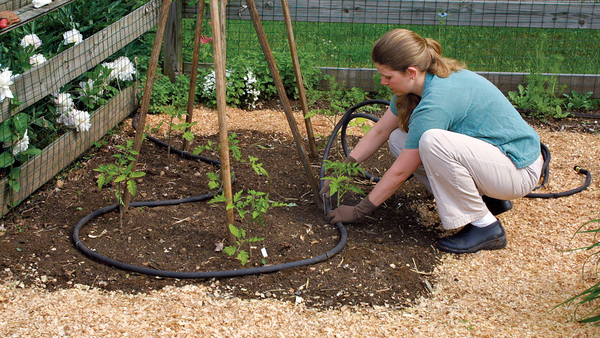A Comprehensive Guide to Improve Gardens
jessicaadison010 January 4, 2024Elevated gardens offer a unique gardening experience that combines ease and aesthetics. They allow you to garden without the strain of bending or kneeling. This approach is not only beneficial for your back but also adds a visual appeal to your space. Elevated gardens come in various styles and materials, providing options for every gardener’s preference.
There are many elevated gardens, each with unique charm and function. From wooden planter boxes to modern metal frames, the variety is vast. Choosing the right type depends on your personal taste and the specific needs of your plants. This section will explore the common types and their best uses.

Planning Your Elevated Oasis
Selecting the right location for your elevated garden is crucial. It should get enough sunlight and be easily accessible to you. Consider the view from your home and how the garden will enhance it. The right spot ensures your plants thrive, and the park becomes a focal point of your space.
Good design is key to a successful elevated garden. It should be both functional and visually pleasing. Think about the size and shape that will fit your space best. A well-designed garden is easier to maintain and more enjoyable to use.
Gathering Your Toolkit
Your garden’s framework is its backbone. Wood offers a natural look and is great for a traditional garden feel. On the other hand, metal is more durable and gives a sleek, modern appearance. Consider your style preference and the climate when choosing.
Secure and sturdy fasteners are essential in garden construction. They keep your garden safe and stable. Choose weather-resistant materials to ensure longevity. Proper fasteners will prevent wobbling and maintain the structure’s integrity over time.
The right gardening supplies are the secret to a thriving elevated garden. You’ll need quality soil, the right seeds or plants, and basic tools like trowels and pruning shears. Investing in these essentials will pay off with a beautiful, healthy garden.
Building Your Elevated Garden
Building the frame is the first step in creating your garden. It’s a straightforward process, but accuracy is key. Follow each step carefully to ensure your garden’s foundation is strong. A well-built frame is essential for a long-lasting garden.
Why Support Braces are Essential
Support braces are not just an afterthought. They are crucial for the stability of your elevated garden. They prevent swaying and ensure your garden can withstand the elements. Properly installed braces give you peace of mind about your garden’s safety.
Installing the Garden Beds: Laying the Groundwork
Garden beds are where your plants will live and grow. Installing them correctly is essential for the health of your plants. Ensure they are level and securely attached to the frame. Proper installation leads to better water distribution and plant growth.
Garden Plumbing: Ensuring Proper Water Drainage
Good drainage is crucial in elevated gardening. It prevents waterlogging and keeps your plants healthy. Plan your garden’s plumbing carefully. Proper drainage contributes significantly to the success of your garden.
Mastering Garden Plumbing
Proper drainage is key to preventing root rot and other water-related issues. Plumbing service ensures excess water flows away from your plants. A well-designed drainage system is a must for a healthy, elevated garden.
Setting Up Your Drainage System
Installing a drainage system might seem daunting, but it’s simpler. A few well-placed pipes and some gravel can do wonders. Take the time to set it up correctly. Your plants will thank you for it.
Installing an Efficient Irrigation System
Regular watering is vital, but it doesn’t have to be time-consuming. An irrigation system can save time and ensure your plants get the needed water. Set it up to water deeply but infrequently. This encourages strong root growth.
Tips for Water-Efficient Gardening
Water efficiency is important for environmental and practical reasons. Use mulch to reduce evaporation, and choose drought-resistant plants if you live in a dry area. These simple steps can make a big difference in your water usage.
Cultivating Your Elevated Garden
Not all plants are suited for elevated gardens. Choose varieties that do well in confined spaces and don’t have deep root systems. Herbs, lettuce, and strawberries are great options. Selecting the right plants ensures a bountiful and beautiful garden.
Preparing Your Soil for Success
Good soil is the foundation of a healthy garden. It should be nutrient-rich and well-draining. Add compost to enrich it and make sure it’s loose and airy. This preparation will give your plants the best start.
Watering: Keeping Your Garden Hydrated
Proper watering is key to a thriving garden. Water deeply to encourage root growth, but don’t overdo it. Check the soil moisture regularly. Consistent watering keeps your plants healthy and promotes steady growth.
Regular Maintenance for a Lush Garden
A little upkeep goes a long way in gardening. Regularly check for pests, prune dead leaves, and fertilize as needed. These simple tasks keep your garden looking its best and producing abundantly.
Conclusion
We’ve covered everything from choosing the right location to maintaining your garden. Remember, the success of your elevated garden lies in careful planning and regular care. With these tips, you’re heading to a thriving green space.
Your elevated garden is more than just a collection of plants. It’s a source of joy, a place of relaxation, and a testament to your gardening skills. Enjoy the process and the bounty of your efforts. Happy gardening!


